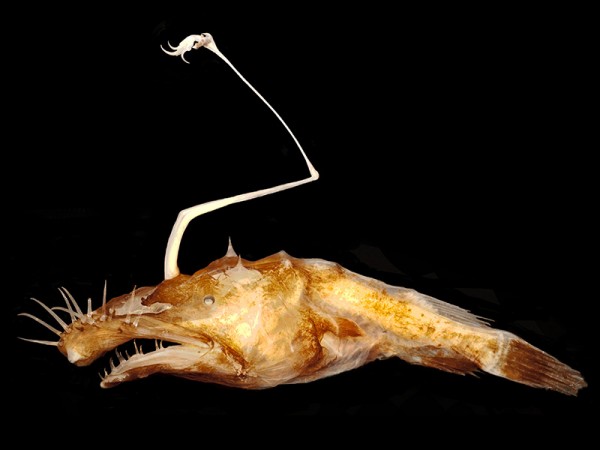Meet the Top 10 Newly Found Species of the World
| Ana Verayo | | May 26, 2016 03:25 AM EDT |
(Photo : Theodore W. Pietsch, University of Washington/ESF) Lasiognathus dinema: female in the northern Gulf of Mexico
Scientists have now revealed the Top 10 New Species of 2016, that includes a giant Galapagos tortoise, a grotesque anglerfish and even an early human ancestor, that have all been selected as some of the best new discoveries from last year.
Like Us on Facebook
Among 18,000 new species, researchers from the State University of New York College of Environmental Science and Forestry, have chosen the top 10 of last year.
According to SUNY-ESF president, Quentin Wheeler, in these past 50 years, many species came to be recognized as critically endangered and almost on the brink of extinction, at very alarming rates. Now, researchers aim reveal these amazing new species, to spread awareness about immediate threats to biodiversity and to also establish an archive as well before they disappear completely in this world.
Wheeler also says that the rate that new species that continue to be discovered and proliferate is also at a larger rate and faster rate which is a positive sign. In further exploring the planet's biodiversity, discovering more clues is essential to lead to more efficient and sustainable ways for human consumption and for a wider scale of conservation success. A glimpse of the Top 10 list:
The new species of Giant Galapagos Tortoise known as Chelonoidis donfaustoi was discovered to only consist of just 250 individuals that are originating from an eastern population of the island.
A newly discovered human ancestor known as Homo naledi, was uncovered in South Africa from a 1,550 fossils from 15 individuals, dating back to 2 million years ago. This humanoid consists of features and characteristics from the Australopithecus and Homo species, which modern humans are part of.
A rather ugly looking anglerfish known as the Lasiognathus dinema was discovered in the Gulf of Mexico during a NOAA investigation of the Deepwater Horizon oil spill. These grotesque fish are known to thrive in the deepest parts of the oceans where they possess an esca or illicium which acts as a lure that protrudes on front of their heads like an antenna, dangling a light on its tip.
Other new species that are also included in this list is the Laia, the Little Ape from Spain (Pliobates cataloniae), the carnivorous Giant Sundew (Drosera magnifica), a new crustacean known as the House-building isopod (Iuiuniscus iuiuensis), the ruby red Seadragon (Phyllopteryx dewysea), the Paddington Bear beetle (Phytotelmatrichis osopaddington), the Umma Gumma damselfly and finally, a tiny, flowering tree (Sirdavidia solannona).
Tagstop 10 new species, endangered species, extinct species, Biology, Biodiversity
©2015 Chinatopix All rights reserved. Do not reproduce without permission
EDITOR'S PICKS
-

Did the Trump administration just announce plans for a trade war with ‘hostile’ China and Russia?
-

US Senate passes Taiwan travel bill slammed by China
-

As Yan Sihong’s family grieves, here are other Chinese students who went missing abroad. Some have never been found
-

Beijing blasts Western critics who ‘smear China’ with the term sharp power
-

China Envoy Seeks to Defuse Tensions With U.S. as a Trade War Brews
-

Singapore's Deputy PM Provides Bitcoin Vote of Confidence Amid China's Blanket Bans
-

China warns investors over risks in overseas virtual currency trading
-

Chinese government most trustworthy: survey
-

Kashima Antlers On Course For Back-To-Back Titles
MOST POPULAR
LATEST NEWS
Zhou Yongkang: China's Former Security Chief Sentenced to Life in Prison

China's former Chief of the Ministry of Public Security, Zhou Yongkang, has been given a life sentence after he was found guilty of abusing his office, bribery and deliberately ... Full Article
TRENDING STORY

China Pork Prices Expected to Stabilize As The Supplies Recover

Elephone P9000 Smartphone is now on Sale on Amazon India

There's a Big Chance Cliffhangers Won't Still Be Resolved When Grey's Anatomy Season 13 Returns

Supreme Court Ruled on Samsung vs Apple Dispute for Patent Infringement

Microsoft Surface Pro 5 Rumors and Release Date: What is the Latest?










